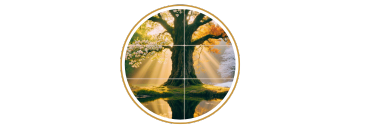任脈 (Rèn Mài) — The Conception Vessel
任 (Rèn): The character 任 signifies "to bear, to carry responsibility, to entrust." It combines the person radical (亻) with the phonetic 壬, symbolizing the body's duty to nourish and sustain. In the Conception Vessel, it evokes the profound task of carrying life, whether in the womb, in the blood, or in the hidden spark of ideas yet to be born.
脈 (Mài): The character 脈 means "vessel, meridian, pulse." It combines 月 (flesh) with 永 (eternal flow), representing circulation that never ceases, the endless river of life within us.
Together — 任脈 (Rèn Mài): The Conception Vessel is called the "Sea of Yin," the channel that governs fertility, creation, and nourishment. More than a pathway, it is a living metaphor for the body's capacity to hold, sustain, and bring forth new beginnings.
Spiritual Symbolism: The Ren Mai embodies Yin — receptive, grounding, life-giving. It stabilizes Yang by containing it and is most influential in reproduction and childbirth. It is the vessel of beginnings, carrying the possibility of renewal in every cycle.
CV5 Shimen — 石門 (Stone Gate)
Name & Imagery
CV5, Shimen — "Stone Gate," evokes the enduring stability of a threshold, a strong portal through which vital energies flow. This point represents a balance between containment and movement, a gateway where Yin energy consolidates and prepares for circulation throughout the lower abdomen. It is imagined as a stone foundation, steadfast and reliable, guarding the body's essence.
Location
CV5 is located on the anterior midline of the lower abdomen, 2 cun above the pubic symphysis, and 1 cun below CV4 (Guanyuan). This places it in the lower jiao, the energetic region associated with reproductive and urinary health. Its position makes it a key regulator of foundational life forces.
Classical Functions
In classical Chinese medicine, CV5 is known for its role in regulating menstruation, assisting reproductive function, and harmonizing Qi in the lower jiao. It is particularly associated with transforming dampness, resolving stagnation, and supporting fluid metabolism. Daoist texts describe it as a stabilizing gate, preserving the body’s internal treasures and ensuring the smooth flow of Yin essence.
Modern Context
In modern acupuncture and acupressure, CV5 is applied to support fertility, menstrual regulation, and lower abdominal discomfort. Gentle moxibustion or pressure on this point can encourage circulation of Qi, strengthen the reproductive system, and promote energetic grounding in both men and women.
Symbolism and Cross-Cultural Echoes
CV5 aligns with aspects of the Svadhisthana (sacral) chakra in Indian traditions, emphasizing reproductive and creative energy. Both traditions highlight the lower abdomen as a seat of foundational vitality, where the body’s life force is both contained and activated. Daoist imagery portrays Shimen as a stone portal, guarding the essence of life and offering a stable threshold for the flow of Yin energy.
Point Combinations
CV5 is often paired with CV4 (Guanyuan) and CV6 (Qihai) to consolidate the lower jiao and strengthen vital energy. It may also be combined with points on the Bladder or Spleen meridians to harmonize fluid metabolism and resolve dampness. Such combinations enhance both physiological and symbolic functions, supporting stability, nourishment, and vitality.
Gentle Practice for Self-Care
Honoring CV5 can involve gentle abdominal massage, focusing on the lower belly as a stable reservoir of energy. Sitting in stillness and visualizing this “stone gate” consolidating vitality fosters grounding, calm, and a sense of inner security. Mindful awareness of this area nurtures both physical and creative energies.
Reflection
Which thresholds in my life need stability and protection? How can I guard and nurture my inner reserves while allowing energy to flow freely and safely?
References
GB/T 12346-2021. Nomenclature and Location of Acupoints. Standardization Administration of China.
Huangdi Neijing (Yellow Emperor’s Inner Classic). c. 2nd century BCE.
Wiseman, N., & Ellis, A. Fundamentals of Chinese Medicine. Paradigm Publications, 1995.
Kaptchuk, T. J. The Web That Has No Weaver: Understanding Chinese Medicine. McGraw-Hill, 2000.
Panagiota Sophia Vlahou
Certified Beekeeper | Specializing in Traditional Beekeeping & Natural Wellness Methods
Trained in Traditional Acupuncture – Academy of Traditional & Chinese Medicine
Member of the Beekeepers’ Association of Attica-Greece
Disclaimer: This article is for educational and informational purposes only. It is not intended to diagnose, treat, cure, or prevent any disease, and it does not substitute professional medical advice. Always consult a qualified healthcare professional before making any changes to your diet, lifestyle, or health practices.

